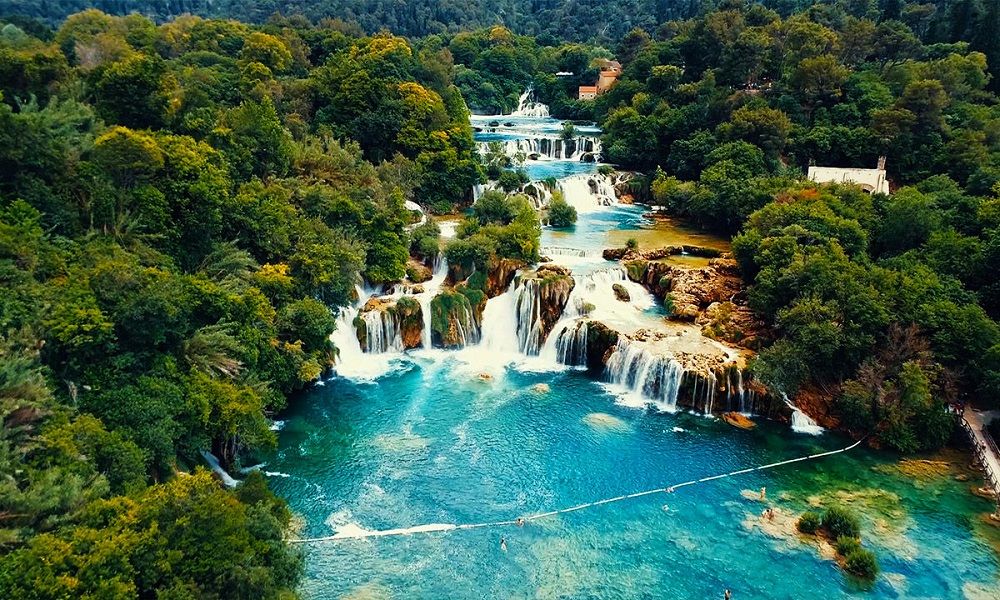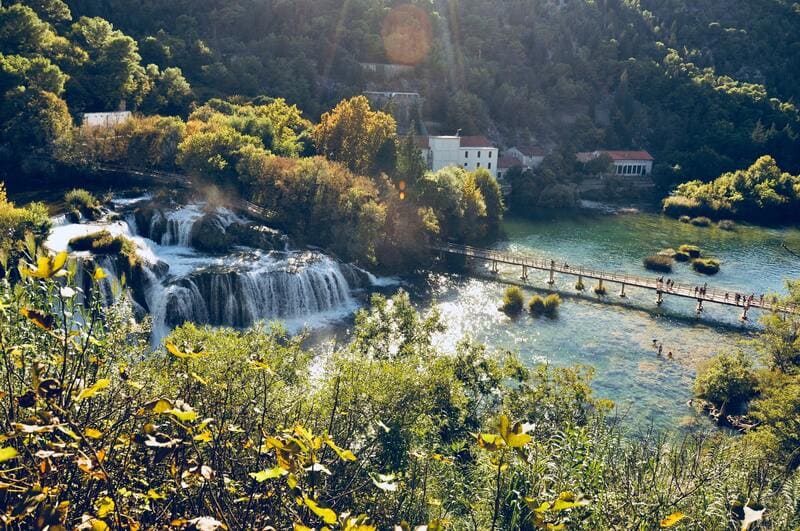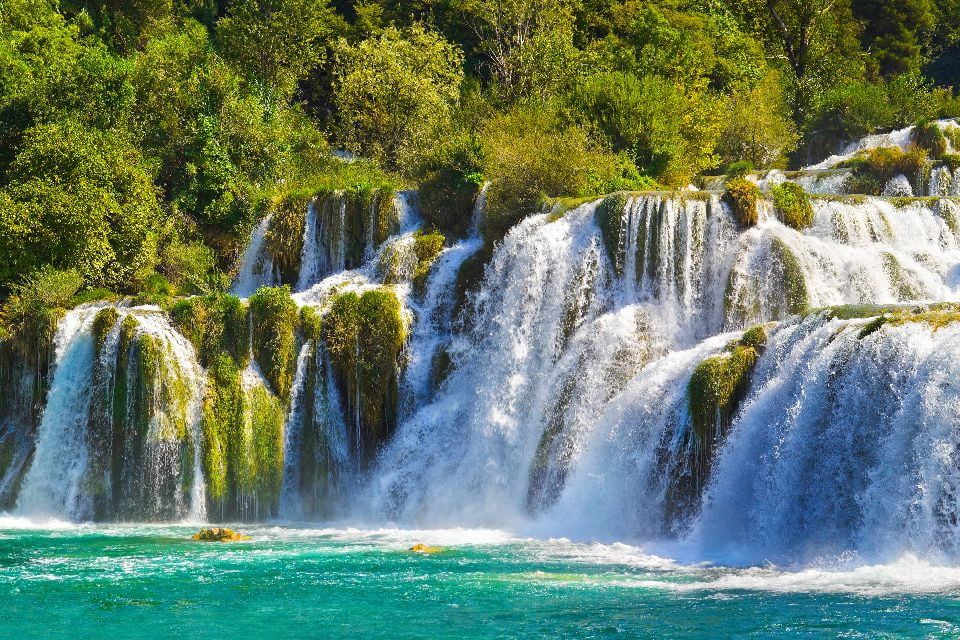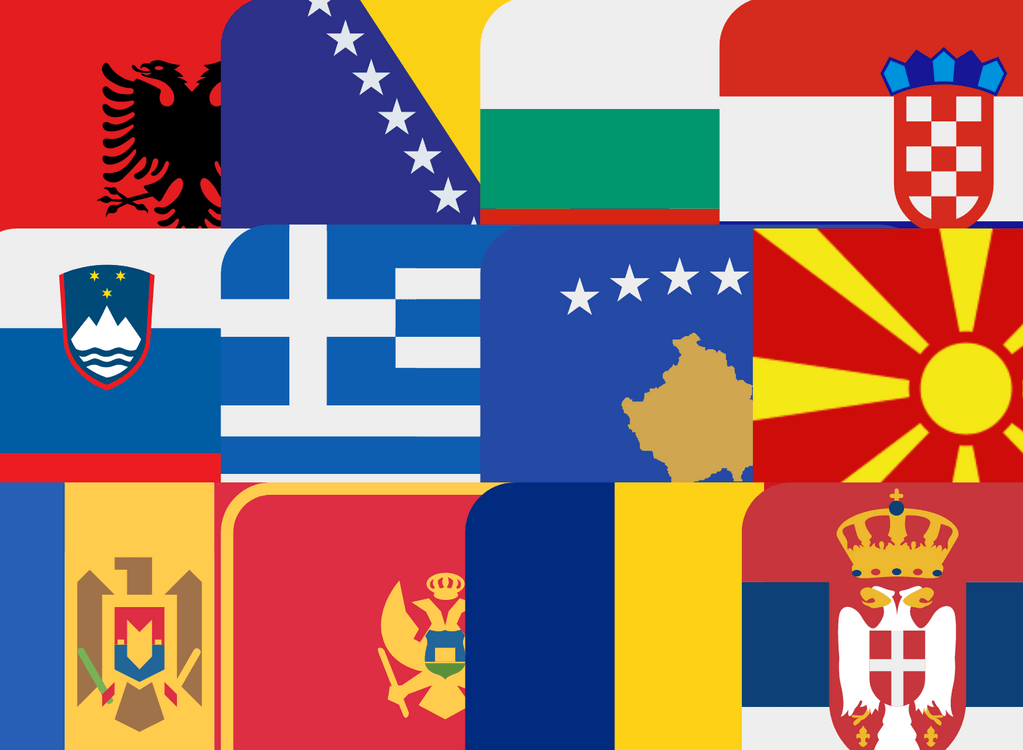Introduction to Krka National Park
Located in Croatia, Krka National Park is a fascinating destination for nature lovers. Spanning 109 km², it is famous for its waterfalls. The park takes its name from the Krka River, which is an integral part of its natural beauty.
Krka offers dream-like landscapes that combine turquoise waters with lush vegetation. Since its declaration as a national park in 1985, Krka has captivated visitors from all over the world. Here, nature is displayed in all its splendor, with waterfalls descending in travertine steps, creating an impressive visual spectacle.

The park is not only a refuge for diverse flora and fauna but also a place of great cultural and historical importance. Among its treasures is the Serbian Orthodox Monastery of Krka, located near the river. This monastery, dating back to the 14th century, is a testament to the rich history and cultural heritage of the region.
The Skradinski Buk and Roski Slap waterfalls are particularly popular among visitors. Skradinski Buk, known for its 17 cascading steps, is the largest and most spectacular in the park. Roski Slap, on the other hand, impresses with its expanse and the multiple small islands that adorn it.
For those interested in ethnography, the park offers a glimpse into the past with its restored water mills and presentations of ancient traditions. These ethnographic facilities provide insight into how local people used the river for grain milling and laundry in the past.
Additionally, the park is home to a diversity of animal and plant species, some of which are endemic to the area. Visitors can explore through well-maintained trails that offer panoramic views of lakes and waterfalls, making it an unforgettable experience for any nature lover.
Krka National Park is not only a place to admire natural beauty but also to learn about local history and culture, making it a comprehensive tourist destination.
In the next section, we will delve into how to reach Krka National Park, facilitating the planning of your visit to this wonderful natural sanctuary.
Cómo llegar al Parque Nacional de Krka
Reaching Krka National Park is straightforward from Croatia’s main cities, offering visitors various transportation options. Here we will explore how to get there from Split, the closest major city, as well as from the country’s capital, Zagreb.

From Split, visitors have several alternatives to reach the park. The most flexible option is renting a car, allowing you to explore the park and its surroundings at your own pace. The journey takes approximately an hour and a half. For those who prefer public transportation, there are buses connecting Split to Skradin, the most popular entrance to the park. This journey takes just over an hour. Additionally, guided tours from Split offer a convenient way to visit the park without any worries.
From Zagreb, the capital of Croatia, the distance is greater, but it is still possible to make a day trip. Driving from Zagreb can take around three and a half hours, making renting a car a viable option for groups or those with flexible itineraries. Alternatively, there are bus services connecting Zagreb with Skradin, although it is important to check the schedules and frequency of these services, as they may vary.
For international visitors, the airport closest to the park is Split Airport. From the airport, you can rent a car or take a bus to the city center, where you can find direct connections to Skradin and other park entrances.
It is essential to plan in advance, especially during the high season when the demand for transportation and accommodation near the park may be high. Additionally, visiting the official Krka National Park website can provide up-to-date information on opening hours, entrance fees, and useful tips for planning your visit.
In summary, whether by car, bus, or through a guided tour, reaching Krka National Park from Croatia’s main cities is accessible and offers visitors the opportunity to explore one of the country’s most impressive natural treasures.
We will continue exploring the wonders offered by Krka National Park, focusing on its famous waterfalls in the next section.
The Waterfalls of Krka: A Natural Spectacle
The waterfalls of Krka are undoubtedly the park’s main attraction. This natural spectacle comprises several majestic waterfalls, each with its own charm and beauty. Among them, Skradinski Buk and Roski Slap stand out for their impressive magnitude and the beauty of their surroundings.
Skradinski Buk is the most famous and accessible waterfall in the park. With its 17 travertine steps, it extends along 800 meters and drops 45 meters in height. The water flows over natural barriers, creating crystal-clear pools that invite contemplation. Although swimming is no longer permitted, the walkways and trails around Skradinski Buk offer spectacular views and opportunities to photograph local wildlife.
Roski Slap, lesser known but equally impressive, extends along 650 meters. This set of cascades and rapids is famous for its small islands and water mills, some of which have been restored and can be visited. The area around Roski Slap is ideal for hiking, with trails offering panoramic views of the Krka River and its surroundings.
In addition to these two jewels, the park harbors other lesser-known but equally enchanting waterfalls, such as Bilušica Buk, Manojlovac Slap, and Miljacka Slap. Each offers a unique experience, ranging from tranquil pools to impressive waterfalls.
Access to the waterfalls varies by season, with spring and autumn offering the best water flow and fewer crowds. During the summer, although the park attracts more visitors, the waterfalls maintain their allure, offering a refreshing respite from the Mediterranean heat.
For nature enthusiasts, Krka National Park not only offers spectacular waterfalls but also the opportunity to explore rich biodiversity. The area is inhabited by a variety of animal and plant species, some of which are endemic to this region. The park’s trails and walkways allow visitors to immerse themselves in this natural environment, observing the local flora and fauna up close.
In conclusion, the waterfalls of Krka represent a natural spectacle of unmatched beauty. With options for everyone, from hikers to photographers and nature lovers, a visit to these waterfalls is an experience that is not easily forgotten. In the next section, we will delve into another treasure of the park: the Visovac Monastery and other attractions.
The Visovac Monastery and Other Attractions
Krka National Park is not just distinguished by its waterfalls. The Visovac Monastery, an island located in the middle of the lake formed by the Krka River, is another jewel worth exploring. This Franciscan monastery, founded in the 15th century, houses a rich collection of historical manuscripts and sacred art. Surrounded by meticulously tended gardens and accessible only by boat, Visovac offers an atmosphere of peace and spirituality.
In addition to the Visovac Monastery, the park is home to the Serbian Orthodox Monastery of Krka, also known as the Krka Monastery. This spiritual retreat, located near the river, dates back to the 14th century and is an important pilgrimage site. Visiting the monastery offers a unique insight into the region’s cultural and religious heritage.
Another notable attraction within the park is the Roman amphitheater in Burnum. The archaeological remains of this Roman military camp include a triumphal arch and an amphitheater that could accommodate up to 8,000 spectators. Excavations in Burnum have revealed significant finds that recount the history of the Roman presence in Dalmatia.
For nature lovers, the park offers numerous hiking and cycling trails that wind through its diverse landscape. These trails allow visitors to discover the park’s rich biodiversity, including endemic flora and fauna species. The trails are well-marked and vary in difficulty, making them accessible for the whole family.
Activities in the park are not limited to nature observation. Visitors can also participate in boat tours along the Krka River, offering a different perspective of the waterfalls and lush riparian vegetation. During the summer months, activities such as swimming in designated areas are permitted, providing a refreshing escape from the heat.
Krka National Park is also a place to learn about local traditions and the history of the region. The ethnographic village at Skradinski Buk recreates rural life in Dalmatia, with demonstrations of water mills and traditional weaving. This educational aspect enriches the visitors’ experience, offering a comprehensive view of the human interaction with the environment over the centuries.

In a few words, Krka National Park is a destination that offers much more than its famous waterfalls. From spiritual retreats to archaeological remains and outdoor activities, the park is a testament to Croatia’s rich biodiversity and cultural heritage.
A visit here promises an unforgettable experience, filled with discoveries and a connection with nature.
You can read our report about what do you need to do before travel to Croatia with usefull information.
